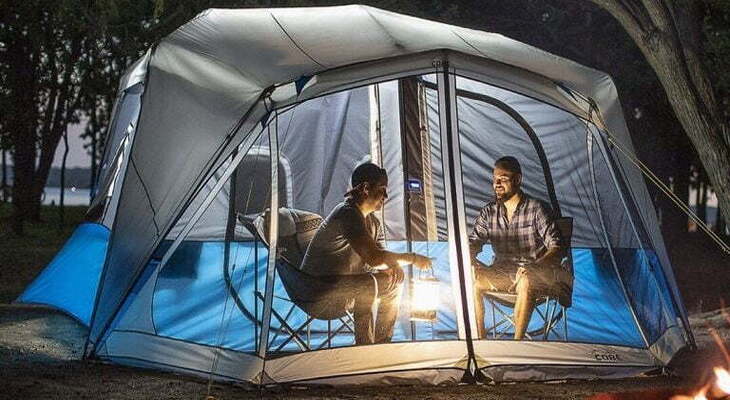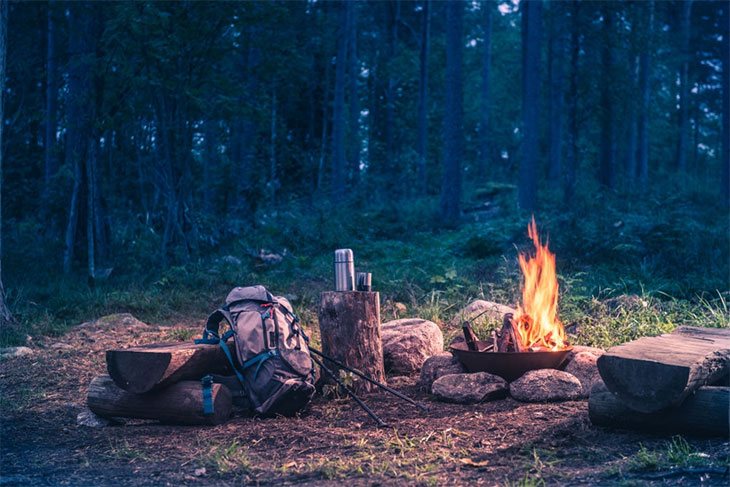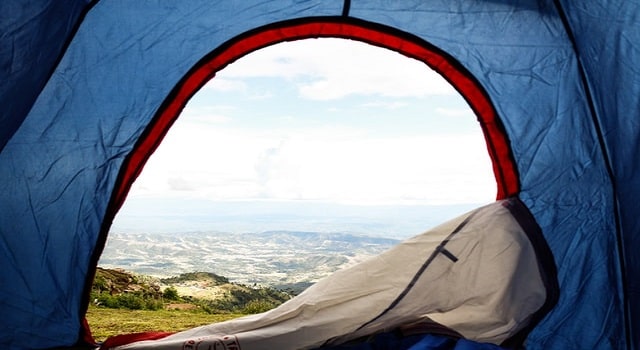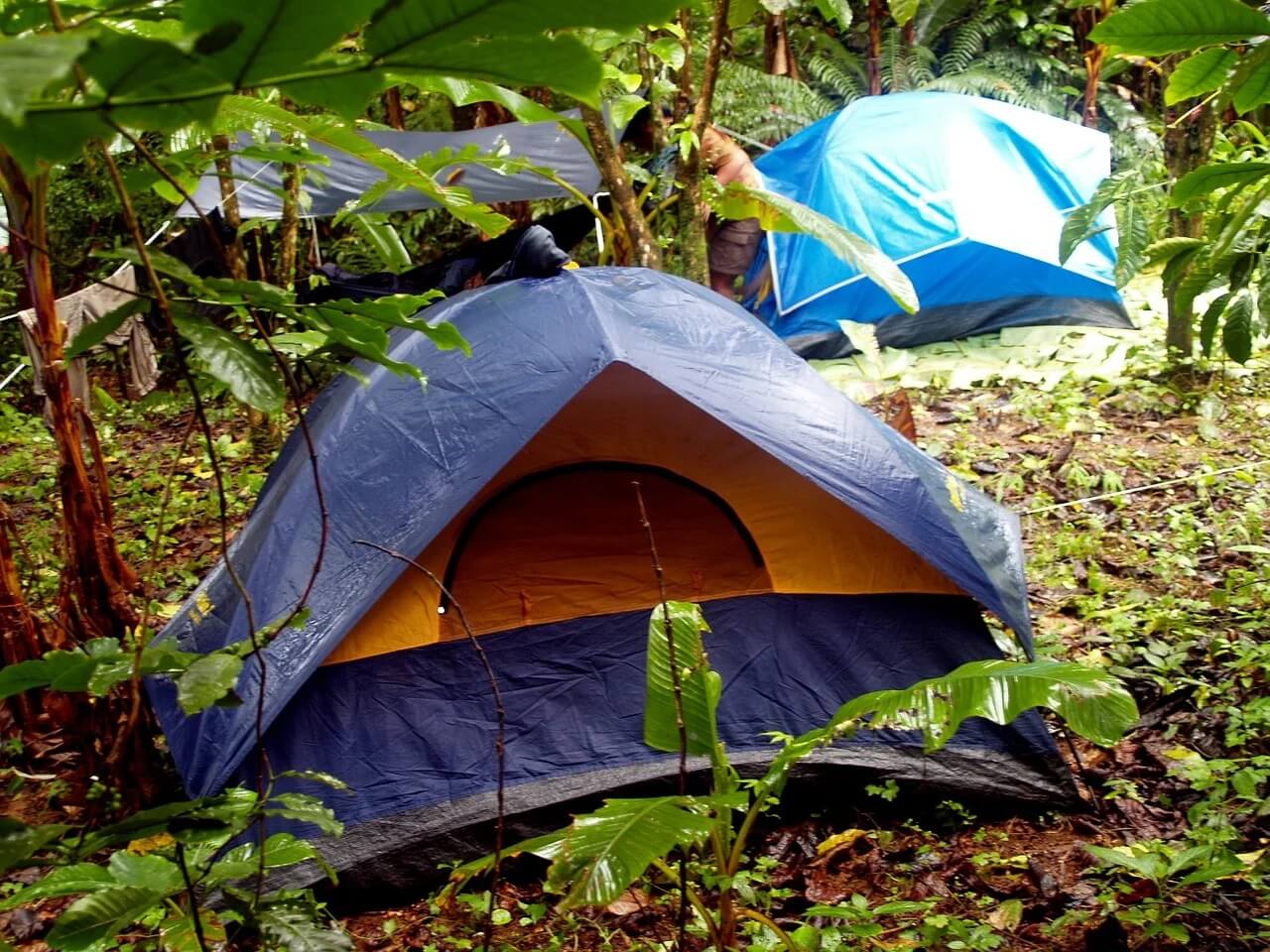
What is the most wind resistant tent Every summer wind and related issues of tent stability plagues us. Some of the most common questions we get asked here at Tentrr are: “How can I find a stable tent for high winds?”, “How do you keep your tents from blowing away?” and, unfortunately, many more requests for help with this problem (we hope by now you have a great tarp and a tent tie-down system).
The standard advice from professional campers is this: use a freestanding tent with external guy out points, set it up properly for high winds, and never leave an unattended camp without taking the time to ensure that your tents are as stable as possible.
We understand that not everyone can follow all of these instructions to the letter, but do take them into consideration when you are designing your camp.
Tentrr has put together a few clips containing some helpful hints on how to keep your tents secure, even in the most turbulent camping conditions.
Contents
What is the most wind resistant tent guide?
1. First, select a location for your tent
That is not under the most intense winds nor overhanging ledges or cliffs. The more open and flat your ground is, the better. If you are on high dunes or near an unusually windy cliffside find yourself another campsite nearby until you have time to re-evaluate a more stable set-up.
2. Next you want to make sure your tent is properly staked down.
This means making sure that each of the points where the stakes are attached to the corners and walls is as taut as possible, preferably with two stakes per corner point.
Combined with the heavy-duty lines, three or four stakes are better than two, especially if you are in a windy area. If necessary, use the line on your tarp to secure points of your tent (Extreme Weather Tents I recommend) that can’t be staked down (i.e., the center point of an A-frame).
4. Your lines on each corner will always help create stability for any tent.
We recommend at least 1/8th inch cord for corner lines. Carrying at least six individual lines (2 per corner) is ideal, but if you are tight on pack space or weight be sure to set up your tent with the minimum number of lines possible; 2 should be sufficient in most conditions unless it is extremely windy. Make these perimeter lines as tight as possible before attaching them to the stakes.
5. Guy lines should be placed on each side of your tent
One on the windward end and one on the leeward end, both running at right angles to your floor line. If you are using a tarp these guy lines will not only keep it down but also help keep stability during high winds (see the tarp clip below).
If you are using a freestanding tent with guy-out points, find an arrangement that will ensure these points are at least 5 feet apart and start staking down your tent. The more tightly your lines can be drawn without adding excessive tension to the fabric of your tent, the more stable it will be.
This is especially true with tents that are freestanding, which are much more susceptible to blowing away than non-freestanding tents. For the strongest possible guy out points use one stake for each point rather than two. Stakes should be placed at a 45-degree angle from both corners of your tent and line attachments should be as close to those stakes as possible.
6. Finally, you should always set up your tent
Set your tent with the vestibule or rainfly attached if there is a possibility of precipitation. In high winds, the rainfly will not only protect your inner tent from water but also provide extra protection from wind gusts. Do not stake it down on the sides, just the foot and head ends to create a hem along the ground. If you are using a tarp or poncho make sure it is staked down at least 6 inches from all points (6 inches of slack between lines and fabric will keep your tent stable in high winds).
If you would like more information on how to make your tent as stable as possible please watch our clips on tarps and freestanding tents on the Tentrr Youtube channel.
The following are some features to consider when buying a tent that will withstand strong winds:
1. A freestanding design. These tents will stand up to the wind better than non-freestanding designs, which can collapse in high winds.
2. A single, central support pole or two poles that cross in an “X” configuration. Having a single pole that runs the length of the tent is stronger than having several supports running from corner to corner, and it provides more headroom than tents with crossed poles. If you use trekking poles with this style of tent, make sure they are parallel with each other for stability.
3. A double-wall design. Having a separate rainfly helps keep the tent stable in high winds because it’s not suspended from the same points where the inner tent attaches to the poles and ground.
4. A low profile. In general, tents that have a low and aerodynamic shape and pitch tautly will be less likely to catch the wind.
5. Guy-out points on the sides of a tent, if it doesn’t already come with them. These help secure your shelter in high winds by giving you more places to stake down the rainfly or pitch the inner tent closer to the ground.
6. An all-mesh inner tent for good ventilation in hot weather. A mesh inner tent will help keep the air circulating in your shelter, which will give you a little extra stability in high winds because there won’t be any flapping fabric to catch the wind.
7. Be aware of whether or not your tent is freestanding. If it isn’t consider using a tarp as an outer layer to help keep the tent stable.
8. Use the lowest possible center pole (or trekking poles if you use those). The lower your center or crossing poles are, the less they will catch the wind and move around when it’s breezy. If you’re using trekking poles, try to use them in a cross configuration (rather than the traditional single pole) and place them as low as possible.
9. Avoid getting a tent with too many support poles across the top. That creates more places where wind can get caught, so go for designs that have fewer poles if you’re concerned about stability in high winds.
10. Try to get a tent that doesn’t have too much mesh on the canopy, because that will catch the wind and make the shelterless stable. Mesh is great for ventilation, but it can also be bad in windy weather.
11. Be cautious of using sleeping under an open-air shelter like a tarp unless you’re with someone else. If it’s just you, the wind will be able to pick up your shelter and toss it away with ease. Sleeping in a bivy sack or tent is much more secure in high winds.
6. Tie guy-out points on the side of your tent if it doesn’t already have them (most lightweight backpacking tents don’t). These will help keep your shelter grounded and stable in high winds.
Our homemade low-cost, low-weight tent is also a great option for adventures where you may face strong winds. This tent has been tested in 50+ mile an hour wind gusts with no problems at all! Check out the DIY Tutorial at:
Conclusion:
Be sure to select a campsite that is as open and flat as possible. If you are near cliffs or dunes consider moving somewhere with less risk of high winds. Make sure your lines on each corner are as taut as possible without putting too much stress on the fabric of your tent.
Guy out points should be 5 feet apart, with as many stakes as possible at a 45-degree angle from each point. Finally, be sure to set up your tent with the rainfly attached if there is a possibility of precipitation.
A strong gust of wind blew the author’s tent down and his pack fell to the bottom of a ravine.





